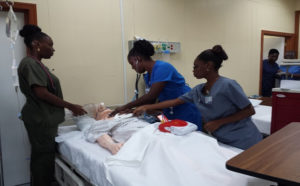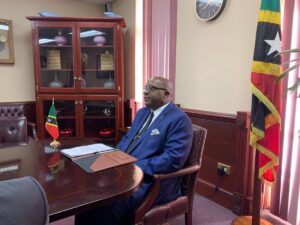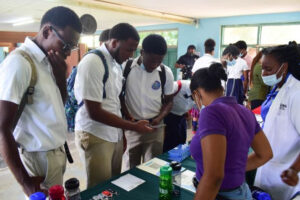Published 5 December 2018
Buckie Got It, St. Kitts and Nevis News Source

The state-of-the-art lab was opened on April 15, 2015 and is situated on the western side of the college.
Appearing on the weekly radio and television programme, “Working for You,” Dr. Dennis-Bradshaw said that there is a significant difference between the previous method of delivering the programme to the one that is now in place.
“Before we had the simulation lab, we had the low fidelity mannequins,” she said. “Those were not computerized. So the students would have learned their first level skills with them, which included bed making, bed bathing and dressings.”
The simulation lab now creates an environment that mimics a real clinical setting.
“So whatever the students will experience in the hospital, they are first exposed to them in the simulation lab,” she said. The environment in the simulation lab is risk-free. They can make mistakes over and over again until they correct themselves, with guidance of course, and there is a chance for them to reflect, visually and mentally, on what they did and what they didn’t do through a process we call debriefing,” Dr. Dennis-Bradshaw said.
The simulation lab allows the students to build their competence and, most importantly to, build their confidence as well, said Dr. Dennis-Bradshaw.
“It’s important that when they get to the clinical setting that, because we had the simulation, it would not be the first time they are experiencing the situation,” she said.
With the simulators, the students can use the computerized system to speak through the simulator. The simulator and the student nurse can engage in dialogue.
Another feature of the lab is “Sim Mom” who can be set to have an actual birth.
“So we set the scenario with the blood and everything so that when the students get [to the hospital] they don’t [get nervous]. They are accustomed now to that setting,” said the dean.
The lab also features a “Sim Baby” that is set to simulate the characteristics of a real baby.
“When we’re teaching neonatal resuscitation, the students can grade themselves on the progress that they are making because we can set the computer to make the baby’s face bluish, which indicates that the baby is not getting enough oxygen,” she explained. “So when the student actually starts to give the breaths, the baby will turn back pink. He would move his limbs and cry and the students would start to clap. So with the system we had before, we could not have done this.”
Dean Bradshaw thanked the Government of National Unity for putting the system in place.






